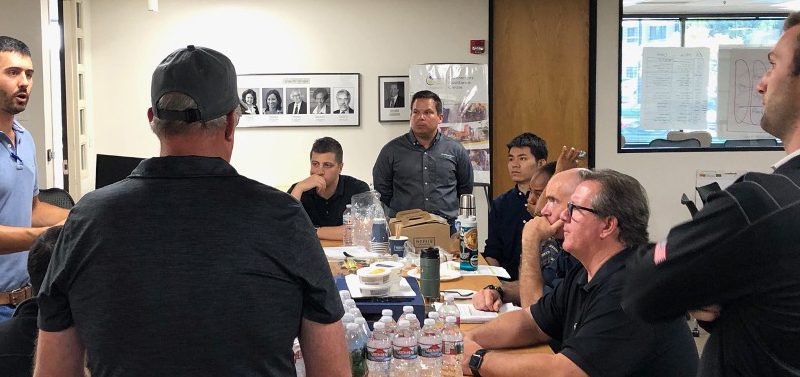“PAC₃E”: Communication by facilitators is unique
We are progressing through INIFAC’s (inifac.org) six overarching facilitator competencies: Presence, Assessment, Communication, Control, Consistency and Engagement.
Number 3 is Communication. “Master facilitators are skilled communicators. They actively listen, making sure to playback and confirm important points. They have highly-tuned analytic skills which allow them to process information quickly, differentiate various content issues and isolate critical points in a discussion. They ask questions that help groups to engage effectively. They deliver instructions that are accurate, clear and concise. They effectively identify and verbally summarize agreements.”
In those words from INIFAC are the difference between a typical meeting leader and a skilled facilitator – which either YOU are or YOU can become.
QUICK STORY: It was a team alignment partnering session for a $200 Million municipal facility. The team members included owner reps including one from the City Manager’s office, the design-builder (architects and builder leadership from executive to field) and trade partner project managers. Group of 22 folks; well-intentioned with good hearts.
The conversation was lively but it was becoming clear there were very differing understandings of the issue and while it “sounded” like agreement, as a facilitator I heard the two principal speakers saying very different things – talking past each other. Sometimes smart people speak in nuance and vagueness to reduce conflict. While it’s a decent diplomatic skill, it can lead to genuine misunderstanding, to actually missing the meaning of the words, and to delaying the true understanding of differing points of view.
“Let me break in here,” I interrupted. “Maggie, I don’t think Algar really hears what you are saying. What I’m hearing is – here, let me diagram it.” I went to a flip chart nearby, picked up a dark blue marker and in a few words, connected with lines, diagrammed what I thought Maggie was saying. She corrected one part and then said yes. Algar stared at the diagram and said, “Is that what you think this is?” And he went to the chart, grabbed a red marker and made some very different connections, adding key thoughts not included in Maggie’s explanation. That led to a breakthrough in understanding and in another 20 minutes a resolution of the true issue.
What was the facilitator’s role here? Active listening, understanding the “space between the words” Maggie was using, and utilizing quick highly-tuned analysis, parsing and differentiating the issues and critical points, and challenging what appeared to be a tacit agreement in order to discover deeper issues that, if left unresolved now, would re-emerge as conflict in the future.
So, communication for facilitators is part engineering, deconstructing words and ideas to get to their real meaning and not letting a group off the hook if they are imprecise in their own communication. And it is using different forms of communication – your own words, drawings, stories – to clarify.
If you could clone in equal parts an engineer, a communications major and a psychologist, you might have the perfect facilitator. None of us is all that. Do your best.

